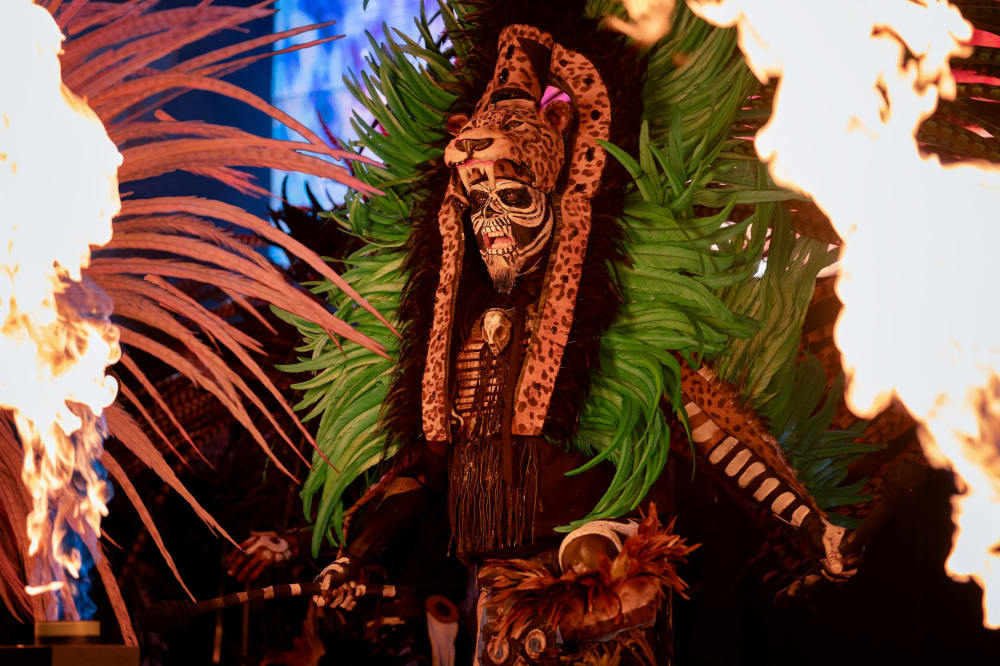
Shamanism is one of the oldest forms of spiritual practice in human history, existing long before the rise of organized religions like Christianity, Islam, or Judaism. It is a form of spiritual expression found in indigenous cultures around the globe—from Siberia to the Amazon rainforest, from Native American traditions to African tribal systems. But as global spiritual ideas increasingly interweave, a complex question arises: Do shamans believe in Jesus?
The answer is not a straightforward yes or no. It depends greatly on geography, culture, personal beliefs, and whether the shaman in question has been influenced by Christianity or practices within a traditional, pre-Christian framework. This article explores how Jesus is perceived in various shamanic traditions, whether shamans integrate him into their spiritual worldview, and how syncretism—blending of belief systems—plays a role.
Panaprium is independent and reader supported. If you buy something through our link, we may earn a commission. If you can, please support us on a monthly basis. It takes less than a minute to set up, and you will be making a big impact every single month. Thank you!
1. What is Shamanism?
Before we can explore beliefs about Jesus, we must first understand what shamanism is. Shamanism is not a unified religion with a central scripture or global doctrine. Instead, it is a spiritual practice centered around direct experience with the spirit world. Shamans are believed to be intermediaries between the physical and spiritual realms, often entering altered states of consciousness to:
-
Communicate with spirits, ancestors, or nature forces
-
Perform healing rituals
-
Offer guidance, divination, or protection
-
Restore balance in individuals and communities
Most traditional shamanic systems are animistic, meaning they believe that everything—animals, plants, rocks, rivers—has a spiritual essence.
2. Who Is Jesus in Christian Doctrine?
In Christianity, Jesus of Nazareth is believed to be the Son of God, the second person of the Trinity, and the savior of humanity through his death and resurrection. Christians view Jesus as:
-
The Messiah (the anointed one)
-
Fully divine and fully human
-
The only way to salvation and eternal life
-
A historical figure who lived in first-century Palestine and was crucified under Roman rule
Belief in Jesus is the cornerstone of Christian faith. But in the context of shamanism—which predates Christianity by thousands of years—the figure of Jesus is interpreted in various ways, if at all.
3. Traditional Shamanic Views: No Jesus in Pre-Christian Cultures
In the majority of pre-Christian or isolated indigenous shamanic systems, Jesus is not part of the spiritual framework. These traditions developed independently of Christian influence and often have their own pantheon of spirits, deities, ancestors, or nature forces. For example:
-
Siberian shamans traditionally commune with sky gods, underworld spirits, and animal guardians.
-
Amazonian shamans may invoke plant spirits like ayahuasca or jungle entities for healing and guidance.
-
African shamans (such as sangomas in Southern Africa) rely on ancestral spirits and divination bones.
In these traditional forms, Jesus does not appear in rituals or belief systems—not because he is rejected, but simply because he is not part of their indigenous cosmology.
4. Syncretism: When Shamanism and Christianity Intertwine
However, in regions where Christianity spread—especially through colonialism or missionary work—shamanism and Christianity often became intertwined. This process, known as religious syncretism, resulted in unique hybrid systems where Jesus may be accepted or reinterpreted within a shamanic context.
Examples of Syncretic Traditions:
a) Latin America
Many indigenous cultures in Latin America were Christianized by Spanish and Portuguese colonizers. Today, in countries like Mexico, Peru, and Brazil, it's not uncommon for curanderos (healers) or shamans to invoke Jesus, the Virgin Mary, and saints alongside indigenous deities and spirits.
For instance:
-
In Andean cosmology, Jesus might be seen as a powerful light-being or elevated spirit aligned with cosmic harmony.
-
In Afro-Brazilian religions like Umbanda, spirit mediums might work with Catholic figures while channeling other spiritual entities.
In these cases, Jesus is not always viewed in a strictly orthodox Christian sense, but rather as one powerful force among many.
b) Native American Traditions
Among some Native American tribes, particularly those influenced by Christian missionaries, Jesus has been incorporated into spiritual teachings. The Native American Church, for example, blends Christian elements with the traditional use of peyote in sacred ceremonies.
Members may pray to Jesus as the Great Spirit or view him as a teacher or spiritual guide. However, this does not always align with mainstream Christian theology and is often rooted in personal and communal visions.
c) Pacific Islands and Africa
In many parts of Africa and the Pacific Islands, missionaries introduced Christianity while local shamans (sometimes called medicine men or witch doctors) retained elements of their indigenous practices. Over time, Jesus was incorporated as a healer or divine figure, sometimes merged with local deities or spiritual heroes.
5. New Age and Neo-Shamanism: A Different Take on Jesus
In Western societies, Neo-shamanism—a modern, often New Age adaptation of indigenous shamanic principles—has gained popularity. Practitioners of Neo-shamanism may not belong to a specific tribe or culture but draw from various traditions. In this space, Jesus is sometimes embraced as a spiritual master, ascended being, or healer.
-
He is seen not as the exclusive savior, but one enlightened soul among others (such as Buddha or Krishna).
-
Jesus may be invoked in healing rituals or meditations.
-
His teachings (especially about love, forgiveness, and inner peace) are appreciated, but his divinity or exclusivity as the Son of God is often not emphasized.
This universalist perspective sees Jesus more as a shamanic figure himself—someone who healed, had visions, battled evil spirits, and traveled between the physical and spiritual worlds.
6. Can a Shaman Be Christian?
Yes, there are individuals who identify as both shamans and Christians—particularly in syncretic traditions or in contexts where Christianity is the dominant religion. However, the compatibility of shamanism and Christianity remains a subject of debate:
-
Some Christians view shamanism as incompatible with the Bible, citing verses that condemn sorcery, divination, and communication with spirits.
-
Others argue that shamanic practices can be reframed as Spirit-led healing, especially if stripped of any polytheistic or animistic beliefs.
Some Christian mystics and charismatic leaders have even drawn comparisons between Jesus’ miracles and shamanic acts, such as healing the sick, casting out demons, and experiencing spiritual visions.
7. Controversy and Criticism
While some people embrace the merging of shamanic spirituality with Christian ideas, others criticize it for diluting or misrepresenting both traditions.
-
Traditional Christians often see shamanism as dangerous, unbiblical, or even demonic.
-
Traditional shamans may resist incorporating Christian figures like Jesus, viewing them as foreign or colonial impositions.
-
Theologians and scholars caution against cultural appropriation or oversimplification of indigenous beliefs.
8. Final Thoughts: A Spectrum of Belief
So, do shamans believe in Jesus?
The most accurate answer is: Some do, some don’t—and many view him differently than orthodox Christians do. Belief in Jesus among shamans exists along a wide spectrum:
-
Traditional shamans in isolated regions may not know or care about Jesus.
-
Syncretic shamans may see him as a powerful spirit, healer, or teacher.
-
Neo-shamans may revere him as an enlightened being or role model.
-
Christian shamans attempt to reconcile both belief systems in personal or cultural ways.
Ultimately, Jesus' place in shamanic traditions reflects the diverse, evolving, and deeply personal nature of spirituality around the world.
References
-
Hultkrantz, Åke. Shamanic Healing and Christianity in Indigenous Cultures. Brill, 1996.
-
Eliade, Mircea. Shamanism: Archaic Techniques of Ecstasy. Princeton University Press, 1964.
-
Narby, Jeremy. The Cosmic Serpent: DNA and the Origins of Knowledge. Tarcher, 1998.
-
Wallis, Robert J. Shamans/Neo-Shamans: Ecstasy, Alternative Archaeologies and Contemporary Pagans. Routledge, 2003.
-
Harvey, Graham. Animism: Respecting the Living World. Columbia University Press, 2006.
Was this article helpful to you? Please tell us what you liked or didn't like in the comments below.
About the Author: Alex Assoune
What We're Up Against
Multinational corporations overproducing cheap products in the poorest countries.
Huge factories with sweatshop-like conditions underpaying workers.
Media conglomerates promoting unethical, unsustainable products.
Bad actors encouraging overconsumption through oblivious behavior.
- - - -
Thankfully, we've got our supporters, including you.
Panaprium is funded by readers like you who want to join us in our mission to make the world entirely sustainable.
If you can, please support us on a monthly basis. It takes less than a minute to set up, and you will be making a big impact every single month. Thank you.
































0 comments